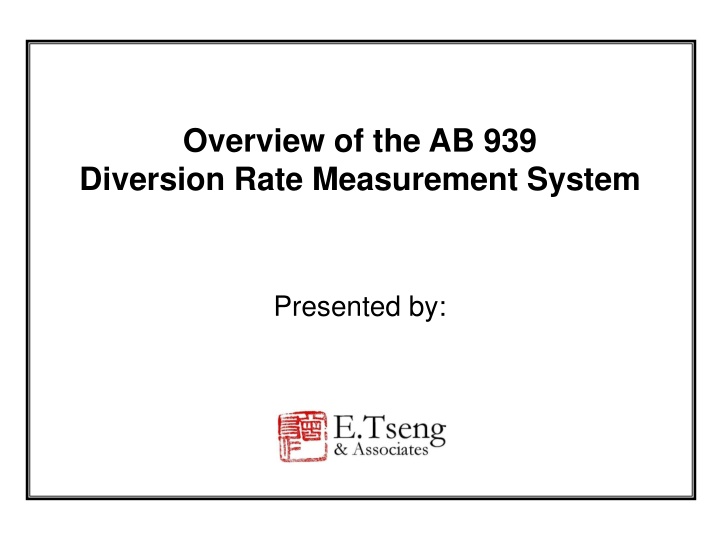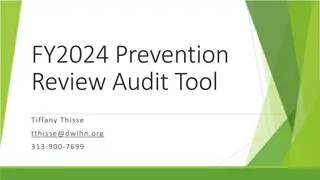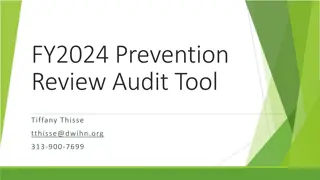
AB 939 Diversion Rate Measurement System
Explore the AB 939 Diversion Rate Measurement System with details on generation-based quantification, CIWMB's adjustment methods, the need for system change, and benefits of SB 1016. Learn about calculating the 50% Equivalent Per Capita Disposal Target for effective waste management.
Download Presentation

Please find below an Image/Link to download the presentation.
The content on the website is provided AS IS for your information and personal use only. It may not be sold, licensed, or shared on other websites without obtaining consent from the author. If you encounter any issues during the download, it is possible that the publisher has removed the file from their server.
You are allowed to download the files provided on this website for personal or commercial use, subject to the condition that they are used lawfully. All files are the property of their respective owners.
The content on the website is provided AS IS for your information and personal use only. It may not be sold, licensed, or shared on other websites without obtaining consent from the author.
E N D
Presentation Transcript
Overview of the AB 939 Diversion Rate Measurement System Presented by:
Generation Based Quantification Method Used for Measuring Diversion Generation = Disposal + Diversion Diversion Rate = Diversion Generation Diversion Rate = Diversion Disposal + Diversion
CIWMBs ADJUSTMENT METHOD Standard Diversion Rate Calculation More People? More Jobs? More Sales? More Waste Generated Base Year Generation Tons Adjustment Method PRC 41780.1 & 41780.2 Calculated Reporting Year Generation Tons PRC 41781
CIWMB Adjustment Method Generation = Disposal + Diversion Calculated Diversion Reporting Year Generation = 100 % Disposal (DRS) Actual Disposal Tons Measured by DRS
Why Change the System? Too much emphasis on numbers instead of program implementation Untimely & Complex 18-24 mo. for final estimated diversion rates Stakeholders wanted the system changed 5
Benefits of SB 1016 Focus on program implementation Increases accuracy, simplicity and timeliness of measurement system Accounts for growth (Caution..!) Saves jurisdictions money and time by eliminating complex formulas 6
Benefits of SB 1016 Provides data earlier for jurisdictions to assess program implementation Disposal number is a factor to consider Does not determine compliance Evaluation focused on how jurisdictions are implementing their programs Increases CIWMB staff field presence to provide technical assistance 7
Calculating the 50% Equivalent Per Capita Disposal Target Use jurisdiction-specific average of 2003- 2006 per capita generation rates Divide average per capita generation rate by 2 to get disposal a jurisdiction would have disposed if it was exactly 50% diversion Baseline/target is jurisdiction-specific 8
50% Diversion Rate = 50% Equivalent Per Capita Disposal Target The 50% per capita disposal target is the amount of disposal a jurisdiction would have had during the base period if it had been exactly at a 50% diversion rate. 10.0 lbs /person /day 5.0 lbs /person /day Base Period Generation (All Disposal + All Diversion) 50% Per Capita Disposal Target (50% of Base Generation) 9
Annual Per Capita Disposal Rate A measure of disposal during calendar report year Expressed in Pounds per Person per Day (PPD) Disposed Disposal Tons x 2000 lbs per ton Population 365 = PPD Disposed (pounds) (person) (day) 10
http://www.calrecycle.ca.gov/LGCentral/reports/diversionprogram/JurisdictionDiversionPost2006.aspxhttp://www.calrecycle.ca.gov/LGCentral/reports/diversionprogram/JurisdictionDiversionPost2006.aspx
LOS ANGELES REGIONAL AGENCY -------------------- POUNDS PER DAY PER RESIDENT -------------------- ----------- POUNDS PER DAY PER EMPLOYEE ----------- DIVERSION RATE EQUIVALEN T 5 DIVERSION RATE EQUIVALEN T 5 Disposal Rate Target 1 Diversion Rate Target 2 DISPOSAL RATE ACTUAL 1, 4 Disposal Rate Target 1 Diversion Rate Target 2 DISPOSAL RATE ACTUAL 1, 4 Generation for Target 3 Generation for Target 3 YEAR 2007 7.1 50.0% 14.2 5.2 63.4% 17.5 50.0% 35 12.7 63.7% 2008 7.1 50.0% 14.2 4.7 66.9% 17.5 50.0% 35 11.6 66.9% 2009 7.1 50.0% 14.2 4.1 71.1% 17.5 50.0% 35 10.8 69.1% 2010 7.1 50.0% 14.2 4.2 70.4% 17.5 50.0% 35 11.8 66.3% 2011 7.1 50.0% 14.2 4.2 70.4% 17.5 50.0% 35 10.9 68.9% 2012 7.1 50.0% 14.2 4.3 69.7% 17.5 50.0% 35 11.0 68.6% 2013 7.1 50.0% 14.2 4.5 68.3% 17.5 50.0% 35 11.3 67.7% 2014 7.1 50.0% 14.2 100.0% 17.5 50.0% 35 100.0% 2015 7.1 50.0% 14.2 100.0% 17.5 50.0% 35 100.0% 2016 7.1 50.0% 14.2 100.0% 17.5 50.0% 35 100.0% 2017 7.1 50.0% 14.2 100.0% 17.5 50.0% 35 100.0% 2018 7.1 50.0% 14.2 100.0% 17.5 50.0% 35 100.0% 2019 7.1 50.0% 14.2 100.0% 17.5 50.0% 35 100.0% 2020 7.1 50.0% 14.2 100.0% 17.5 50.0% 35 100.0%
Disposal Targets - 2006 Disp Rate Calculations - 2009 Population Employment Population Employment 2009 Annual Per Cap Disp (pop)-PPD 2009 Annual Per Cap Disp (emp)-PPD 50% Equiv.- PPD TARGET 50% Equiv.- PPD TARGET Jurisdiction LARA 7.0 17.5 4.1 10.7 Artesia Beverly Hills Bradbury Duarte Hermosa Beach Hidden Hills City of Los Angeles Lynwood Manhattan Beach Palos Verdes Estates Pomona Rancho Palos Verdes Redondo Beach Rosemead Sierra Madre South Gate Torrance 7.3 9.8 25.7 7.6 7.5 15.5 6.8 5.8 9.3 7.8 6.8 6.1 6.9 7.9 6.9 12.5 10.0 19.4 7.8 176.9 19.3 25.0 29.5 16.7 41.0 21.6 50.2 24.2 60.5 17.1 27.2 54.7 70.6 14.3 4.5 6.0 23.0 4.6 4.1 9.7 4.0 2.9 5.4 4.7 4.1 3.6 3.1 4.4 3.6 7.4 5.4 12.5 4.7 165.8 10.7 13.3 21.6 10.3 19.9 12.8 34.6 15.6 32.2 7.9 16.4 25.7 48.6 8.5
Legislation / Regulations that Impacts Diversion Rates AB 32 Calif. Global Warming Solutions Act AB 341 Mandatory Commercial Recycling AB 1826 Organics Diversion AB 1594 No Diversion Credit for ADC CalRecycle Proposed Composting Regulations AB 1126 Engineered MSW Facility SB 498 Biomass Conversion
Thank You Eugene Tseng, J.D. 818-802-7111 etseng@aol.com






















